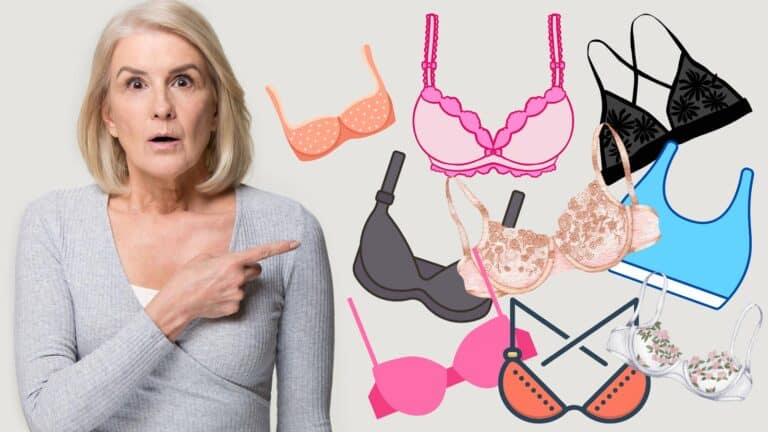15 dress codes once used to control women’s behavior
The workplace once policed women’s bodies down to their shoes, a reminder of how control often hides in plain sight.
Picture being sent home from work because your shoe heels weren’t tall enough. Sounds absurd? Yet countless women faced exactly this reality until recently. According to Brightmine research, between 2018 and 2024, organisations enforcing formal dress codes via employee contracts plummeted from 30% to just 4.3%.
Women still spend significantly more than men on work attire, and many are still navigating the complex waters of “appropriate” appearance standards. Let’s take a look at the most ridiculous dress code rules that were aimed directly at women in the past.
Mandatory Skirts and Dresses

The “ladies must wear skirts” rule prevailed in corporate America for decades. Airline companies, banks, and law firms could persistently insist that their female staff wear dresses or skirts, whatever the discomfort, temperature, or practicality. This was not simply about appearing “professional,” this was a way of rigidly enforcing old-fashioned gender roles through clothing.
Rubman explains that California law prohibits employers from prohibiting female employees from wearing pants. Beyond that, general employment laws across the U.S. prohibit people from being treated differently based on gender. Many women recall the discomfort of wearing mandatory dresses during the winter months or performing physically demanding tasks.
Makeup and Grooming Mandates

Women often face more demanding and expensive professional grooming standards than men, including expectations for makeup, hairstyles, and manicures, as well as meticulous eating and speaking habits to avoid smudges or crumbs.
There are well-documented examples of it in the form of the grooming regulations for airlines.
High Heels Requirement

According to Sreedhari Desai, in a February 2022 talk at Harvard, she views studying high heels in the workplace not as trivial, but as a “keyhole” to observe the complex issue of gender inequality. Her reasoning is based on heels’ ubiquity, cultural meaning, and contradictory views as both “power dressing” and a symbol that can sexualize women, making them a suitable lens to uncover subtle gender inequality.
The Ontario Human Rights Commission remarked that mandatory heels can create pain and injury in addition to perpetuating gender stereotypes. Some companies defended the rule, saying that heels made women seem more “authoritative,” but the subtext was plain: women’s comfort was less important than adherence to beauty norms.
Uniform Skirts for Service Workers

Restaurant and hospitality chains outfitted their female employees in revealing outfits designed to cater to male guests, rather than provide for the comfort and safety of their workers. Short skirts, fitted dresses, and high heels were all self-imposed “uniforms” that raised the risks for harassment.
The economic pressure was palpable; plenty of women couldn’t afford to miss shifts because of uniform infractions. These uniforms were also extremely impractical: serving the hot food whilst wearing the miniskirt, shoveling your hand down the toilet to wipe away the toilet scum, wearing heels, and not forgetting the deteriorating customer interaction in the name of vulnerability.
“Cover Up” Policies

In schools and workplaces, dress codes and rules often targeted women and girls with open-ended requirements to “cover up.” These policies communicated that women’s bodies were inherently distracting or unpalatable and, as such, placed the responsibility for men’s behavior directly on women’s shoulders.
“Traci Fiatte, CEO, non-technical staffing, Randstad US.said “It’s great to empower your employees to dress for their day, as well as show their personality, but it is equally important for employers to set some clear guidelines to ensure that everyone feels comfortable.
Gendered Color and Fabric Standards

For decades, women in offices were held to unwritten dress codes that favored pastel colors and soft fabrics, while darker, structured looks were deemed too serious for them; they were perceived as belonging to men, perpetuating traditional gender roles. More subtle biases persist to this day, particularly in certain industries, such as hospitality and retail, which often encourage women to dress in “approachable” styles.
These standards affect the ability to express oneself and how one is perceived professionally; they place women in positions where their style may feel stifled, forcing them to choose between personal taste and legitimacy.
Ban on Pants

The “no pants for ladies” rule may seem positively medieval by today’s standards. However, it remained in effect in the professional sphere well into modern times.
According to NPR, women weren’t allowed to wear pants on the Senate floor until 1993, the same year that the first women’s restroom was built off the Senate floor, and many corporate offices maintained similar restrictions. Women in pants were seen as challenging traditional femininity and, by extension, social order. The ban forced women into impractical clothing for many job functions, such as climbing a ladder in a pencil skirt.
“Professional” Jewelry and Accessories Only

Policies in the workplace regarding “subtle jewelry” often allowed supervisors to capriciously police women’s accessories, categorizing items like colorful earrings or statement necklaces as unprofessional.
The rules were inconsistently enforced, favoring men’s accessories, which caused me distress about my personal style. These discrepancies also highlighted cultural biases in jewelry, which unfairly impacted women from various backgrounds.
No Visible Tattoos or Piercings

For women, being judged harshly for an extra ear piercing or a butterfly tattoo on the wrist has long been a thing, more so than for our male colleagues, likely due in part to the inherent gender biases that inform what’s deemed “professional appearance” in the first place. A small nose stud or wrist tattoo could end job opportunities in conservative fields.
A 2023 Pew Research Center found that 32% of U.S. adults have a tattoo, up from 23% in 2010, including 22% who have more than one. Many companies now recognize that diversity of appearance can actually enhance their brand image and employee satisfaction.
Leggings and Yoga Pants Ban

In some instances, leggings have been banned from schools and workplaces, targeting women’s wardrobes while overlooking casual wear for men.
These limitations have been challenged as arbitrary and unjust, burdening schools with enforcing dress codes instead of providing an education. Women said they felt scrutinized and had to be attuned to whether their outfits met unclear standards.
Restrictions on Religious Garments

The American Civil Liberties Union advocates for the right of people to express their religious beliefs through attire, including Muslim women who wear hijabs, Sikh women who wear turbans, and Jewish women who wear headscarves. Companies often hid behind “uniform policy” excuses to avoid accommodating religious dress. These restrictions particularly affected Muslim, Sikh, and Jewish women who faced the impossible choice between their faith and their jobs.
Lawsuits have helped protect some workers, but enforcement continues to falter in many industries. The growth of remote and hybrid work has shown just how arbitrary many of those restrictions were.
Prohibition against Wearing Sleeveless or Low-Cut Blouses

Office dress codes have long targeted women unfairly, banning sleeveless tops and relying on subjective terms like “low cut” that are subjectively interpreted based on body type, as well as the “how low can you go?” principle.
Meanwhile, men often escape scrutiny, as short-sleeved shirts are generally deemed acceptable. This cultural double standard is evident in the complaints about how women dress during the hot summer months.
Policing Hair Style and Length

Natural, curly, or “non-traditional” hairstyles were put in the crosshairs, most notably in the case of people of color.
According to the Economic Policy Institute, over 20% of Black women ages 25–34 have been sent home from their jobs due to their hair. Corporate beauty standards often reflected European hair textures and styles, creating discriminatory barriers that perpetuated biases. Loc’d hair, braids, or afros were deemed “unprofessional” while similar maintenance and styling requirements weren’t applied to straight hair.
Swimwear Regulations for Public and School Pools

Differences in the rules for body coverage for swimming and playing on the beach are most notable for girls and women, who have to conform to stricter dress codes than boys.
These regulations frequently prioritize modesty over the physical requirements of athletics, introduce confusion regarding cultural and religious exceptions, and give all the wrong messages about the female body and its right to engage in healthy recreation.
Rules Regarding Thin Strap and Shoulder Coverage

The “two-finger strap rule” was notorious in schools across the country, aimed at girls’ tank tops and sundresses with precision using a measuring tape. These policies created disturbances in the classroom as girls were removed from classes for violating the dress code.
According to the GAO report, 44% of dress codes include informal removal policies, such as removing a student from class without documenting it as a suspension. Dress code enforcement was inconsistent and unfair, with female students often singled out for minor violations, while male students faced little scrutiny. This sent a troubling message that a girl’s education could be disrupted over arbitrary rules.
Key takeaway

The history of discriminatory dress codes is a reminder that the way experienced by women at work can be seriously impacted by even what might seem like unimportant policies, as well as financial burden and stifling personal expression. Progress requires continued vigilance to ensure that new policies don’t recreate old biases in new forms.
Why investing for retirement is so important for women (and how to do it)

Why investing for retirement is so important for women (and how to do it)
Retirement planning can be challenging, especially for women who face unique obstacles such as the wage gap, caregiving responsibilities, and a longer life expectancy. It’s essential for women to educate themselves on financial literacy and overcome the investing gap to achieve a comfortable and secure retirement. So, let’s talk about why investing for retirement is important for women and how to start on this journey towards financial freedom.







